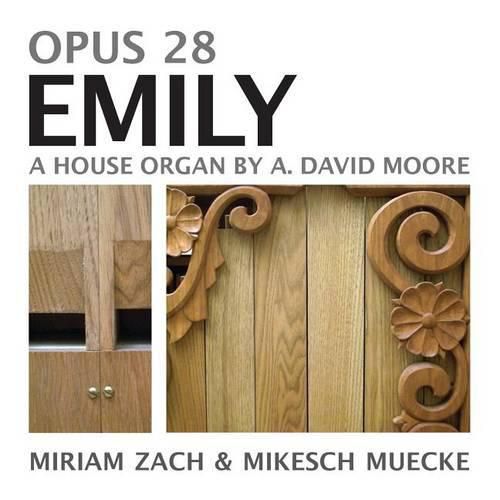Readings Newsletter
Become a Readings Member to make your shopping experience even easier.
Sign in or sign up for free!
You’re not far away from qualifying for FREE standard shipping within Australia
You’ve qualified for FREE standard shipping within Australia
The cart is loading…






The pipe organ Op. 28, Emily, was designed and built by A. David Moore of Pomfret, Vermont, assisted by Thomas Bowen, John Atwood, and Thaddeus Stamps. Commissioned by Miriam Zach, Mikesch Mucke, and Margaret Zach for the International Women Composers Library in August 2004, it was installed in July 2005 in Gainesville, Florida. The clarity and subtle beauty of the sound of the pipes of Op. 28, its lovely solid wood-carved case-work with bench, and direct precise key action all contribute to the aesthetic pleasure and salubrious experience of the organist and listeners alike in an innovative design. The book chronicles the installation of the pipe organ in Gainesville, Florida. Op. 28 is made completely of natural solid wood (no plywood) with beautiful joinery and creative care in details. Black Cherry, Butternut, and Ash came from A. David Moore’s forest in Vermont. He and his colleagues cut trees and ran them through the saw-mill on his property. The intricate case carving and bench are Black Cherry. The case and front pipes are Butternut. Pedal pipes are Ash. A few wooden parts come from other regions. Close-Grain Oak in pipe caps comes from Germany. Toeboards are Western Red Cedar. Sharps and stop knobs are made of Rosewood. Bench height adjustment blocks are Black Cherry. There are no metal pipes. The only metal parts are copper tubing connecting the pedal windchest and pedal pipes, lead pedal tuners, and pedal-to-valve connection rods. A mixture of 75% linseed oil plus 25% mineral spirits cares for the wood. The action is direct, i.e. the keyboard is suspended at the tail of the keys that push stickers down to open the valves in the chest. Pedals are square with a roller board and pull directly. There is no coupler, i.e. when the organ is on, pedals are on, unless the pedal windway is disconnected from the blower. An auxillary pedal cover made of Cherry wood may be placed over the pedal pipes.
$9.00 standard shipping within Australia
FREE standard shipping within Australia for orders over $100.00
Express & International shipping calculated at checkout
The pipe organ Op. 28, Emily, was designed and built by A. David Moore of Pomfret, Vermont, assisted by Thomas Bowen, John Atwood, and Thaddeus Stamps. Commissioned by Miriam Zach, Mikesch Mucke, and Margaret Zach for the International Women Composers Library in August 2004, it was installed in July 2005 in Gainesville, Florida. The clarity and subtle beauty of the sound of the pipes of Op. 28, its lovely solid wood-carved case-work with bench, and direct precise key action all contribute to the aesthetic pleasure and salubrious experience of the organist and listeners alike in an innovative design. The book chronicles the installation of the pipe organ in Gainesville, Florida. Op. 28 is made completely of natural solid wood (no plywood) with beautiful joinery and creative care in details. Black Cherry, Butternut, and Ash came from A. David Moore’s forest in Vermont. He and his colleagues cut trees and ran them through the saw-mill on his property. The intricate case carving and bench are Black Cherry. The case and front pipes are Butternut. Pedal pipes are Ash. A few wooden parts come from other regions. Close-Grain Oak in pipe caps comes from Germany. Toeboards are Western Red Cedar. Sharps and stop knobs are made of Rosewood. Bench height adjustment blocks are Black Cherry. There are no metal pipes. The only metal parts are copper tubing connecting the pedal windchest and pedal pipes, lead pedal tuners, and pedal-to-valve connection rods. A mixture of 75% linseed oil plus 25% mineral spirits cares for the wood. The action is direct, i.e. the keyboard is suspended at the tail of the keys that push stickers down to open the valves in the chest. Pedals are square with a roller board and pull directly. There is no coupler, i.e. when the organ is on, pedals are on, unless the pedal windway is disconnected from the blower. An auxillary pedal cover made of Cherry wood may be placed over the pedal pipes.